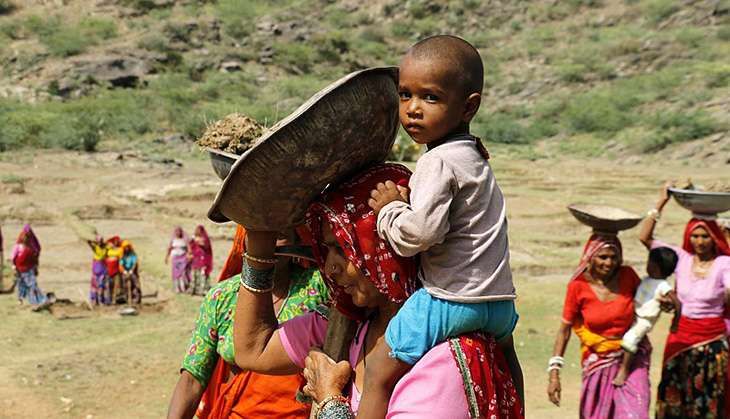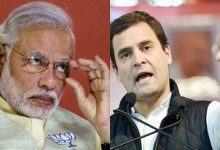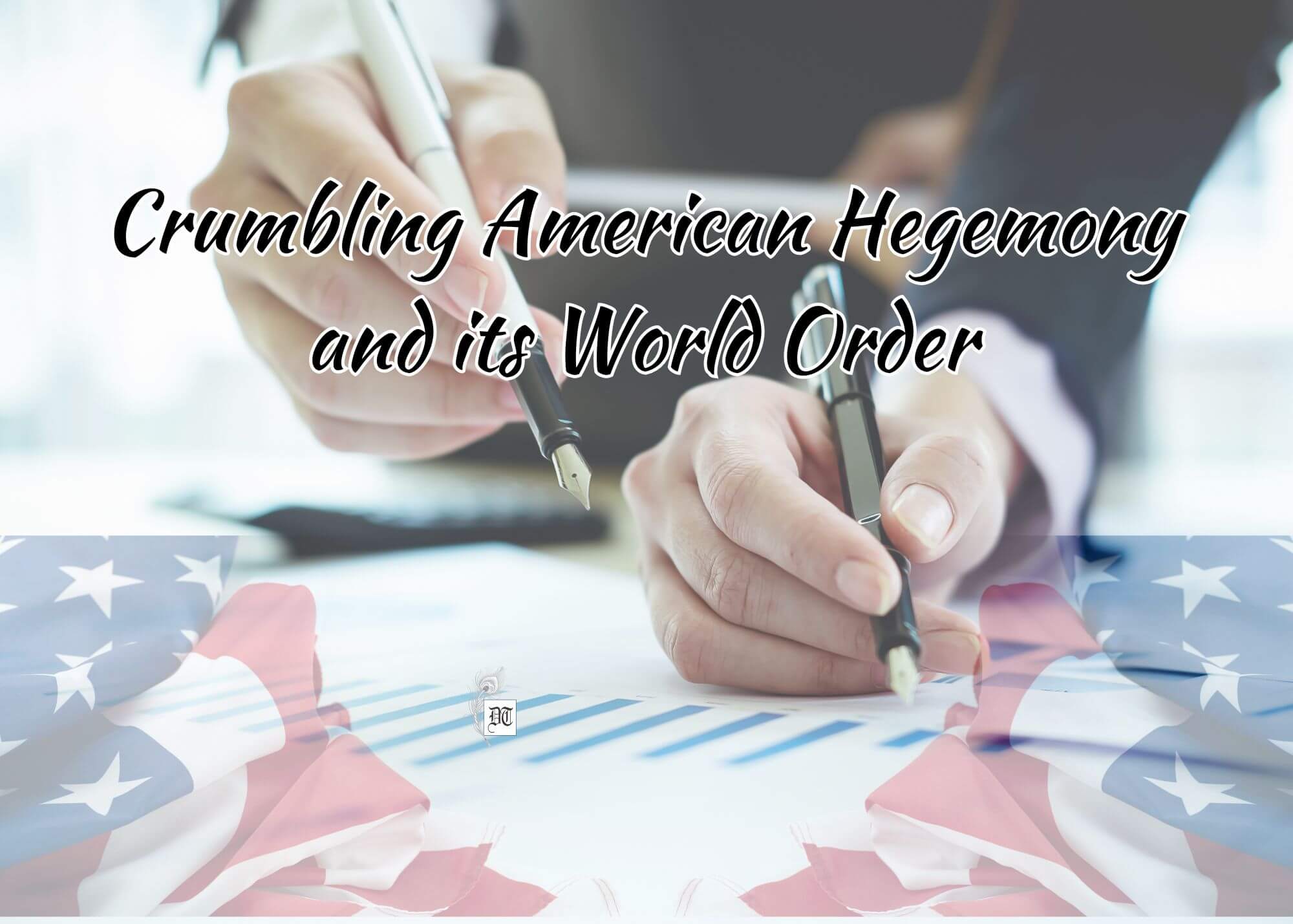The BJP was in a denial mode about this social welfare and public works programme, but it refrained from abolishing it. The party chose to use it for its electoral gains, but with some changed mechanism. The BJP also reduced the total amount sanctioned for the scheme. But the fact remains that after ten years the NREGA endures because it provides the poor a political voice. Unfortunately for the BJP, this section of voters did not shift its loyalty to the BJP. A report for Different Truths.
The Narendra Modi government is discreetly moving ahead to abolish the National Rural Employment Guarantee Act (NREGA). The idea had dominated the drawing room discussions of important BJP leaders just ahead of the 2014 Lok Sabha elections. Almost all the leaders were in favour of giving a burial to the programme but failed to muster courage as they were apprehensive of a major protest from the beneficiaries. The issue again came up for discussion after the polls, but once again the thought of antagonising the huge population of the rural poor prevailed.
The BJP had, in fact, described NREGA as a “flop” in its election manifesto. The scheme no doubt did not prove to be a significant poverty-eradication instrument, but at the same time, it cannot be described a complete failure. While the Congress launched the scheme to reach out to the rural poor, the BJP nursed an antagonistic view of the project and its beneficiaries. On paper, the scheme had given employment to 4.3 crore poor households, but it is an open secret that a huge amount of funds was siphoned off by government officials and middlemen entrusted with its implementation.
The BJP was in a denial mode about this social welfare and public works programme, but it refrained from abolishing it. The party chose to use it for its electoral gains, but with some changed mechanism. The BJP also reduced the total amount sanctioned for the scheme. But the fact remains that after ten years the NREGA endures because it provides the poor a political voice. Unfortunately for the BJP, this section of voters did not shift its loyalty to the BJP. This has been the reason that the BJP and Modi government slashed the total budget outlay for the scheme.
NREGA is both revolutionary and modest, but the role of the middlemen and vested interest has discredited it. Charges of NREGA not being an efficient mechanism to deliver anti-poverty assistance were levelled against it. It is also being accused of not creating a durable asset and producing substandard public works.
But these accusations are certainly not enough to disband the programme. The partisan and ideological debates that surfaced since the idea of a right-to-work initiative first appeared on the policy agenda of the United Progressive Alliance (UPA) government make it clear that the social and feudal forces that were against the rural poor did not cherish the idea if reaching the benefits to them. They nursed the view that empowering of India’s poorest and most marginalised people, precisely the kind of people that social protection programmes find difficult to reach, will be detrimental to their class interest. They abhorred the idea of enhancing the “political capacity” of poor people.
It was envisaged that the implementation of NREGA would make the panchayats more proactive and serve the interest of the poorest people. But to a large extent, t did not happen. Instead, it gave birth to a new batch of greedy and corrupt politicians. It was visualised that NREGA’s participation and accountability provisions would provide the poor and proletariat people a voice in identifying local works projects and opportunities to engage collectively in citizen-auditing of these projects, but unfortunately, this proved to be utopian. The new class of elected representatives of the panchayats could not liberate the scheme from the clutches of government officials.
The failure of the panchayats in shaping the future of the rural poor was the major reason behind the demand for paying wages through personal bank accounts. The activists and architects of NREGA at no stage could envisage that the scheme would not help end the longstanding practice in India’s employment programmes of interference by political patrons in the distribution of work opportunities and siphoning off workers’ wages.
The government proposals to restrict NREGA’s coverage to India’s most economically depressed regions were foiled by a combination of grassroots protest and resistance by opposition parties. It is usually argued that NREGA may not be abolished as some BJP chief ministers like it. No doubt in some states the programme has helped the local BJP government. But the reality is that the rulers are against the creation of a powerful section of voters who are diagonally opposed to the urban middle class and the traditional support base of the party. Incidentally, favourable disposition of one or two states did not matter for the BJP leadership.
In recent times NREGA payments were frozen in at least 19 states. The Centre was not releasing funds to 12 states, including Jharkhand, Karnataka, Kerala, Bihar Uttarakhand, Tripura, Gujarat, Madhya Pradesh and Maharashtra. Payments have not been made since September 2017. Over 92 million active workers are not getting their wages on time and the delayed wage payments amount to nearly Rs 3,066 crore, according to a statement by NREGA Sangharsh Morcha, a network of grassroots organisations. It is mandatory for the states to send audited reports of the previous financial year after September 30 every year for the central government to release subsequent tranches of funds.
Workers must receive payments within 15 days of the closure of the muster rolls under NREGA guidelines. If the wages remain unpaid, the workers are entitled to seek compensation at a certain rate per day during the duration of the delay. No legal compensation has been calculated for these delays. During the financial year 2016-17, the central government estimated the compensation to be only Rs 519 crore, 43 percent of Rs 1,208 crore that was actually due.
In 2017, more than 80 percent of the budgetary allocation was spent in the first four months. The ministry of rural development’s (MoRD) request for an additional Rs 17,000 crore has so far been ignored. Currently, with only about 5 percent of the allocation remaining, there is a sharp rationing of expenditure and work.
Surprisingly 14 states pay less NREGA wages than the minimum wage. The Mahendra Dev Committee set up by UPA 2 unequivocally stated that “the baseline for NREGA wage indexation from 2014 may be the current minimum wage rate for unskilled agricultural labourers fixed by the states under the Minimum Wages Act or the current MGNREGA wage rate, whichever is higher”. The Modi government set up another committee, this time headed by the additional secretary, MoRD, which concludes: “In (the) Committee’s opinion, there is no compelling argument for convergence of minimum wages for agricultural labour and wages notified for NREGA workers in view of the differences in activities performed by these two set of workers”. Obviously, the law and workers’ fundamental rights are not of compelling concerns.
A recent independent study by three social scientists unravels the central government’s conscious delay in wage payments and the deliberate denial of responsibility to pay compensation. Analysing over 90 lakh transactions in the NREGA Management Information System (MIS) for 3,446-gram panchayats for FY 2016-17 and 45 lakh transactions in 3,603-gram panchayats in FY 2017-18, it shows that only 32 percent of payments are being made in time, against the government claim of 85 percent.
Arun Srivastava
©IPA Service
Photo from the Internet
#AbolishNREGA #ModiGovernment #SocialWelfare #IPA #DifferentTruths





 By
By
 By
By

 By
By